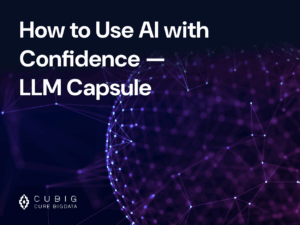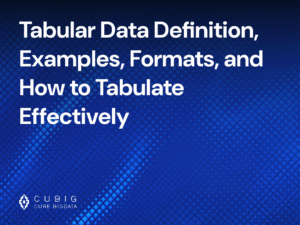Top Data Integration Methods: Tools, Techniques, and Real-World Use Cases
Table of Contents
What is Data Integration?
Definition and Why It Matters for Modern Organizations
Data integration is the process of combining data from multiple sources into a unified and consistent view. It plays a critical role in modern organizations that rely on various platforms, databases, and tools across departments. By aligning disparate data, integration enables accurate analytics, improves operational efficiency, and supports informed decision-making. It ensures that all business units work from a single version of truth, reducing inconsistencies and data silos.
Business Scenarios That Require Data Integration
Data integration is essential in a wide range of business scenarios. These include creating a comprehensive customer 360 profile by combining CRM and support data, improving supply chain visibility by linking ERP and logistics platforms, and executing omnichannel marketing through unified campaign tracking across digital touchpoints. Additionally, regulatory compliance requires consistent data across systems for accurate reporting, while mergers and acquisitions (M&A) often necessitate the consolidation of legacy and modern IT systems into a unified data environment.
Core Data Integration Methods Explained
Manual Data Integration
Manual data integration involves manually exporting, cleaning, and merging data—typically through spreadsheets or custom scripts. Although this approach can work in small-scale or one-time projects, it is time-consuming and error-prone. Due to the lack of automation and traceability, manual integration is generally unsuitable for long-term or enterprise-scale initiatives.
Middleware Data Integration
Middleware tools serve as intermediaries that facilitate communication between disparate systems. By abstracting data exchange processes, middleware enables platforms to interact without tight coupling. This approach is common in enterprise architectures where interoperability and modularity are key, particularly when connecting legacy systems with newer cloud-based applications.
Application-Based Integration
This method uses built-in APIs, SDKs, or application connectors to sync data between platforms. It offers high flexibility and can support real-time integration. However, it often requires significant development effort and ongoing maintenance—especially when APIs change or systems are updated. It’s most effective when systems are well-documented and integration needs are specific.
Uniform Data Access Integration
Uniform data access provides a read-only, virtualized layer that allows users and systems to access data across multiple sources in real time, without moving or replicating it. While this simplifies access and preserves original data integrity, it may suffer from performance issues when handling complex queries or large-scale distributed systems.
Common Storage Integration
This approach involves consolidating data from multiple systems into a central repository, such as a data warehouse or data lake. It is a core method for supporting large-scale analytics, reporting, and machine learning workflows. By storing structured and semi-structured data in one place, organizations can run complex queries, monitor trends, and make data-driven decisions with greater speed and accuracy.
Data Integration Techniques and Approaches
ETL (Extract, Transform, Load)
ETL is one of the most traditional and widely used data integration methods. It involves extracting data from source systems, transforming it into a suitable format or schema (e.g., cleaning, aggregating, standardizing), and then loading it into a destination such as a data warehouse. ETL is batch-oriented and optimized for structured data. It is commonly used in reporting, historical data processing, and business intelligence pipelines where latency is not a critical factor. Because transformation happens before loading, it requires robust data modeling and upfront planning.
ELT (Extract, Load, Transform)
ELT flips the order of operations by first loading raw data into the target system—typically a cloud data warehouse like Snowflake or BigQuery—and then performing transformations within that environment. This approach is suited for modern, cloud-native architectures that can independently scale compute and storage. ELT supports flexible, on-demand data processing and is ideal for organizations that want to retain raw data for reprocessing or auditing. It enables faster ingestion and deferred transformation, making it valuable for iterative data exploration and schema evolution.
Data Virtualization
Data virtualization offers a real-time, unified access layer across multiple data sources without physically moving or copying data. It enables users and applications to query and combine information from databases, APIs, and files as if it were all stored in one place. This technique improves data agility, reduces storage costs, and supports fast prototyping. It is useful when data needs to remain in its source location due to regulatory, technical, or operational reasons. However, performance may be limited for complex queries or large data volumes, as results are compiled on the fly from distributed systems.
Change Data Capture (CDC)
Change Data Capture is a real-time integration technique that monitors source systems for changes—such as inserts, updates, or deletes—and propagates those changes downstream without requiring full data reloads. CDC is efficient for syncing operational systems, enabling real-time analytics, and supporting event-driven architectures. It reduces system load, lowers latency, and ensures that data consumers always have the most up-to-date information. It is widely used in fintech, e-commerce, and logistics where timely data is critical to operations.
Data Federation
Data federation allows querying multiple, distributed data sources through a single logical interface. Instead of consolidating data physically, it translates and routes queries to the appropriate sources and returns the aggregated result. This approach simplifies access in hybrid or multi-cloud environments and enables cross-system reporting without ETL pipelines. It is suitable for scenarios where data needs to remain in source systems but be accessed as a unified view. However, federation can introduce performance overhead and latency, especially with large-scale joins or if source systems have limited query capabilities.
Choosing the Right Data Integration Method
Factors: Data Volume, Frequency, Latency, Structure
Choosing the right data integration method depends on several technical and operational factors. If data changes frequently and needs to be updated in near real time—such as in IoT, finance, or e-commerce—then approaches like Change Data Capture (CDC) or ELT are more suitable. Large-scale, high-volume systems benefit from methods that support distributed processing and horizontal scaling. The format of data also matters: structured data fits well with ETL/ELT pipelines, while unstructured data may require specialized transformation layers or data lake strategies. Ultimately, aligning your integration strategy with your data’s velocity, complexity, and criticality ensures better performance and reliability.
Real-Time vs Batch Processing Considerations
Batch processing involves moving data in fixed intervals—hourly, nightly, or weekly—and is ideal for traditional reporting, warehousing, or archiving. It’s predictable and resource-efficient for periodic tasks. Real-time processing, in contrast, delivers continuous updates, enabling operational systems to respond instantly to new data. CDC, streaming APIs, and event-driven architectures are essential in use cases like fraud detection, inventory updates, or personalized recommendations. Organizations often adopt hybrid strategies—batch for analytics, real-time for operational responsiveness.
Cloud vs On-Premise Integration Needs
Your infrastructure environment plays a key role in integration tool selection. Cloud-native methods—like ELT, serverless pipelines, and data virtualization—offer scalability, elasticity, and lower maintenance overhead. These are ideal for organizations leveraging services like AWS, Azure, or Google Cloud. On-premise or hybrid environments, common in highly regulated or legacy-heavy industries, may still rely on traditional ETL tools, middleware buses, or direct database replication. A successful integration strategy considers not just the data, but also security, compliance, and the organization’s long-term IT roadmap.
Data Integration Tools and Technologies
Enterprise Tools: Informatica, Talend, MuleSoft
These tools are built for large-scale, complex environments where robust governance, metadata management, and enterprise-level security are required. They provide full lifecycle support for building, scheduling, monitoring, and auditing data pipelines. Informatica excels in master data management and data quality. Talend offers strong open-core flexibility with commercial support. MuleSoft is known for API-driven integration, often used in connecting SaaS platforms with internal systems.
Cloud-Native Solutions: AWS Glue, Azure Data Factory, Google Cloud Dataflow
These managed services simplify the creation and execution of scalable ELT and CDC workflows. They are tightly integrated with their respective cloud ecosystems, making it easier to work with services like S3, BigQuery, or Synapse. They support automation, pay-as-you-go pricing, and serverless deployment, which reduces the infrastructure burden for teams and accelerates cloud transformation.
Open-Source Tools: Apache NiFi, Airbyte, Singer
Open-source data integration frameworks offer flexibility and control, especially when custom connector development or data transformation logic is needed. Apache NiFi excels at flow-based programming with visual drag-and-drop configuration. Airbyte provides prebuilt connectors and modern scheduling with a strong community. Singer focuses on simplicity with a pipe-based model for extraction and loading. These tools are ideal for startups, devops-savvy teams, or organizations needing highly customized, budget-conscious solutions.
Low-Code Integration Platforms
Low-code tools lower the barrier to building and maintaining data pipelines. These platforms offer drag-and-drop interfaces, prebuilt connectors, and built-in logic blocks for validation, transformation, and routing. Business users and analysts can configure and monitor flows without deep coding knowledge, enabling faster iteration cycles and reducing reliance on engineering resources. This approach enhances data accessibility and speeds up time-to-insight across departments.
How Azoo AI Enhances Data Integration
Azoo AI facilitates seamless data integration by generating high-quality synthetic data that matches the structure and distribution of original datasets. Its APIs and automation-friendly design allow easy incorporation into existing data pipelines and analytics workflows across enterprise and cloud platforms. This ensures privacy-preserving data availability without disrupting established systems or compliance requirements.
Use Cases of Data Integration Across Industries
Finance: Consolidating Customer Transaction Data
Banks and financial service providers integrate transaction data from multiple internal systems—such as mobile apps, ATMs, and card processors—into a centralized analytics platform. This unified view enables real-time fraud detection, risk scoring, regulatory reporting, and personalized financial product recommendations. By integrating this data effectively, firms can respond faster to suspicious activity and provide proactive customer service.
Healthcare: Integrating Patient Records Across Systems
Healthcare providers must combine Electronic Health Records (EHR), lab systems, pharmacy data, and imaging platforms to build a comprehensive patient profile. Effective integration ensures that care teams have access to up-to-date information at the point of care, reduces duplicate testing, and improves diagnostic accuracy. It also supports public health reporting, research, and AI-powered clinical decision support—all of which require clean, unified data streams.
Retail: Merging Inventory Data from Multiple Channels
Retailers integrate data from physical stores (POS), e-commerce platforms, warehouses, and fulfillment partners to gain a real-time view of inventory levels and product demand. This allows for more accurate forecasting, dynamic pricing, and efficient order routing. Integrated systems support seamless customer experiences like buy-online-pick-up-in-store (BOPIS) and real-time stock visibility across channels.
Logistics: Real-Time Shipment Tracking with IoT Integration
Logistics providers integrate data from GPS trackers, RFID scanners, warehouse systems, and transportation management platforms to offer real-time visibility into shipment status. By centralizing this information, companies can provide customers with accurate ETAs, proactively resolve delays, and optimize delivery routes. IoT-driven data integration also supports predictive maintenance and fleet utilization improvements.
Benefits of Effective Data Integration
Single Source of Truth for Decision-Making
By integrating data from disparate systems into a unified view, organizations create a reliable single source of truth. This ensures that executives, analysts, and frontline teams work from consistent dashboards and reports. It eliminates confusion caused by mismatched KPIs and enables faster, more confident decision-making across departments.
Improved Data Quality and Governance
Centralized integration enables consistent application of data validation rules, deduplication, and cleansing routines. It also improves visibility and auditability, which strengthens compliance with regulations like GDPR, HIPAA, or SOX. Governance becomes scalable, and quality issues can be detected and resolved more proactively when all systems operate from aligned datasets.
Operational Efficiency and Automation Enablement
Integrated data systems reduce the need for manual exports, reconciliations, or copy-paste workflows. This increases operational speed and reduces human error. Moreover, automation tools—from customer notifications to financial reporting—can only be fully leveraged when systems are consistently connected and data is up-to-date.
Scalability Across Departments and Platforms
With a unified data architecture, organizations can scale integration efforts across business units, geographies, and cloud platforms. This flexibility supports business expansion, M&A integration, and digital transformation initiatives by removing data silos and promoting cross-functional collaboration.
Challenges in Data Integration Projects
Handling Schema Mismatches and Data Silos
Integrating data from different systems often reveals inconsistent naming conventions, incompatible formats, or missing fields. These mismatches delay integration efforts and increase the risk of data loss or misinterpretation. Legacy systems and departmental data silos further complicate the process, requiring extensive mapping and reconciliation.
Data Duplication, Latency, and Consistency
Maintaining synchronized data across real-time and batch pipelines is a critical challenge. Inconsistent refresh rates or transformation rules can lead to outdated reports and broken automations. Without proper deduplication and versioning strategies, teams may rely on conflicting datasets, reducing trust in analytics outputs.
Security, Privacy, and Compliance Constraints
Cross-border data integration often involves personally identifiable information (PII) or regulated content. Ensuring proper encryption, masking, data residency, and audit logging is essential. Integration workflows must also align with evolving privacy laws, making security not just a technical issue but a business-critical requirement.
Tool Interoperability and Maintenance
Many organizations use a mix of legacy and modern tools, making interoperability a persistent challenge. APIs may change, formats may drift, and integration pipelines require ongoing monitoring and adaptation. Without a unified architecture or governance model, technical debt builds up and slows innovation.
How Data Integration Is Evolving
From On-Premise ETL to Real-Time Cloud Pipelines
Traditional ETL tools built for on-premise environments are giving way to cloud-native architectures that support real-time ingestion, transformation, and analysis. Streaming pipelines (e.g., using Kafka, Snowpipe, or Kinesis) allow organizations to react instantly to events, enabling agile decision-making and real-time personalization.
Adoption of AI/ML in Data Mapping and Cleansing
AI and machine learning are increasingly being used to automate schema mapping, resolve data quality issues, and suggest transformations. For example, ML models can identify and reconcile duplicate records, infer missing values, or recommend data types—saving significant manual effort during integration.
Rise of Data Mesh and Decentralized Ownership
The data mesh paradigm promotes treating data as a product, owned and managed by cross-functional domain teams. Instead of centralizing integration responsibilities, organizations enable decentralized data ownership with federated governance. This approach improves agility and domain-specific accountability.
Integration-as-a-Service (iPaaS) Growth
Integration Platform as a Service (iPaaS) solutions like Workato, Boomi, provide prebuilt connectors, low-code interfaces, and automated workflows for integrating data across cloud, SaaS, and on-premise systems. These platforms reduce complexity and accelerate time-to-value, especially for organizations adopting hybrid or multi-cloud strategies.
FAQs
What are the most commonly used data integration methods?
ETL, ELT, CDC, data virtualization, and middleware-based integrations are widely adopted depending on architecture and use case.
How do ETL and ELT differ in real-world use?
ETL processes data before loading it, ideal for on-premise systems. ELT loads raw data into scalable cloud systems where transformations occur post-load.
Which data integration tool should I choose?
The choice depends on your data volume, latency needs, and environment. Enterprises often choose Informatica or MuleSoft, while startups may opt for Airbyte or
Can I simulate data integration workflows before going live?
Yes, tools and Apache NiFi support testing and validating integration pipelines in sandbox environments before full deployment.
How does Azoo AI help in secure data integration projects?
Azoo AI enhances secure data integration by providing high-quality synthetic data that mimics real datasets without exposing sensitive information. This allows organizations to develop, test, and validate data pipelines safely, minimizing risks related to data breaches or privacy violations. By integrating synthetic data into workflows, Azoo AI ensures compliance with data protection regulations while maintaining the integrity and functionality of data-driven systems.
CUBIG's Service Line
Recommended Posts









